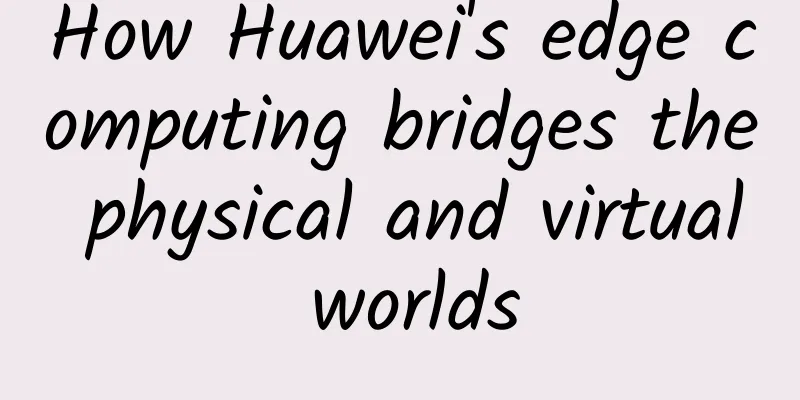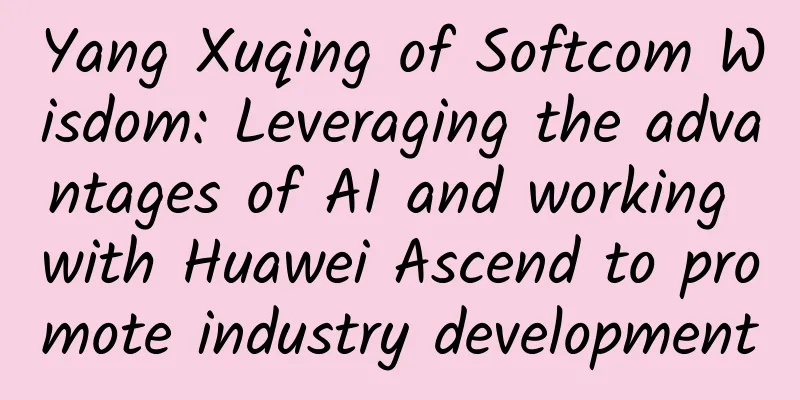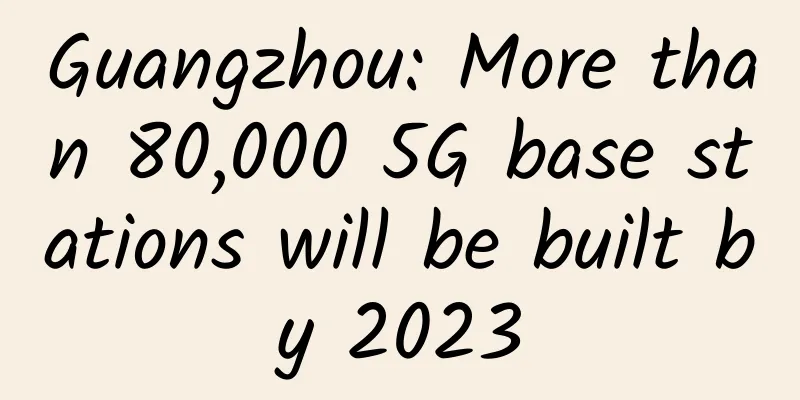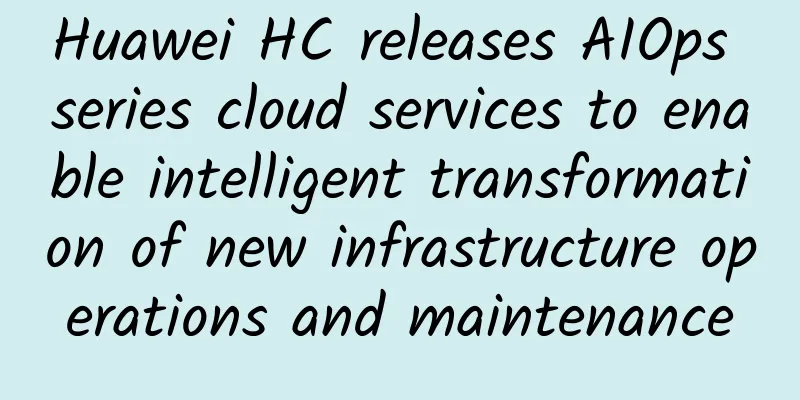How Huawei's edge computing bridges the physical and virtual worlds

|
[51CTO.com original article] If you ask what are the hottest ICT keywords in 2017, then "edge computing" is definitely one of them that cannot be ignored. At the 2017 Huawei Connect Conference that just ended not long ago, Liu Shaowei, President of Huawei's Network R&D Department and Vice Chairman of the Edge Computing Alliance, shared with reporters the important innovative practices of how Huawei and its partners use edge computing in the Internet of Things to tap into customer business value. How edge computing shuttles between two worlds For many traditional OT companies, the physical world is limited by multiple constraints such as location, distance, power supply, volume, and space. To achieve digital transformation, they must leverage many technologies in the virtual world. Liu Shaowei told reporters that Huawei believes that edge computing is the most important node to help connect the physical world and the virtual world. "We have summarized the five values of edge computing, namely connection, real-time, optimization, intelligence, and security. The first letters of these five words just form the word CROSS. We hope that edge computing can serve as a bridge to cross the gap between the virtual world and the physical world."
Although the industry has a good understanding of the value of edge computing, it is still difficult to actually apply it. Liu Shaowei believes that edge computing still faces five major challenges: The first point is the connection method. Due to different application scenarios, different interface types and protocols are required. In the future, more connection methods need to be created with low latency and low bandwidth to achieve smarter connections. The second point is operation and maintenance management. In the era of the Internet of Things, there will be a large number of gateways and terminal devices. Various resources including networks need to be managed in a unified manner. The management of network devices, sensors and terminals will be the standard in the future, which will pose a great challenge to technology. The third point is the edge computing platform, which needs to support a lot of protocols, traditional routers and even gateway functions, achieve single-node *** optimization, and have a programming framework; The fourth point is the collaboration between edge and cloud. Applications need to be deployed and collaborated on demand in the cloud and edge. The fifth point is application migration. It must be able to achieve resettable operation. Industry middleware has more stringent requirements for lightweight. To avoid wasting user investment, an easy-to-migrate framework should be designed, or new applications should be allowed to run on the cloud and the edge. The first point is security. The importance of security is self-evident. How to achieve data security with blurred boundaries and protect user data assets have posed new challenges to security. What chemical reactions will occur between edge computing and enterprises after its implementation? In fact, Huawei has already started implementing edge computing since last year. At the 2016 All-Connect Conference, Huawei introduced the "Elevator Network", which enables the networking and management of millions of elevators. Liu Shaowei introduced that this year Huawei's edge computing practices have become more diverse: in the power industry, it has achieved network access to the distribution network; in the lighting industry, it has achieved intelligent lighting of street lamps; in the catering industry, it has achieved remote networking of food sources; in the transportation industry, it has achieved IoT maintenance and equipment safety protection for special vehicles such as tankers...
At the press conference, Huawei also invited Yang Feng, deputy general manager of Shanghai Wipai Smart Water Co., Ltd., to share his experience. Yang Feng introduced that Wipai used to be a traditional equipment supplier of high-end building water supply equipment, but is now transforming into a technology IoT enterprise in the water industry, which can help urban water companies manage the city's booster stations, water plants, pipe networks, and online water quality monitoring. In the process of digital transformation, the biggest difficulty Wipai faces is how to uniformly connect traditional automatic control equipment to the network. "Since each water meter factory does not want its data to be stolen by its peers, the universal water meter protocol has been modified. If a city uses the data of four water meter factories, it is equivalent to establishing four information islands, each of which uses its own software to collect data, which is difficult to integrate. Moreover, the Internet of Things for water affairs is not only water meters, but also water quality analyzers, flow meters, various instruments, PRC-controlled equipment, etc., and the difficulty of unification can be imagined." Yang Feng said that later, he cooperated with Huawei to develop edge gateways, and finally solved the problem of east-west data intercommunication. The data uploaded by all devices is completely in accordance with the standard data format defined by Weipaige standardization. In this way, data standardization is realized from the bottom layer to the upper layer analysis, and data management becomes very easy. Huawei's edge computing solution also solves the problem of fault diagnosis. Yang Feng explained that Weipaige collects samples at the edge layer, and after analyzing the fault, it sends the fault results to the cloud. The amount of data is very small, avoiding the conventional practice of storing all sample-level data in the cloud, reducing the amount of storage. In addition, Huawei's edge gateway is embedded with security policies and interacts with the bottom layer to achieve secure downward control. "Now, from water production in the water plant to water distribution in the pipeline network, and then to the pressurization equipment at the tap terminal, all data from online water quality monitoring, various flow rates and water meter monitoring in the entire process are integrated together, which is more convenient for users to manage." Li Xianyin, general manager of the enterprise gateway field of Huawei's switch and enterprise gateway product line, added that an application can of course run entirely in the cloud or entirely on the edge. However, considering the reliability of the network, the latency of the network, the bandwidth of the network, the jitter of the network, and the reliability requirements of business operations, the best approach is to model the application layer by layer to decide which business to put on the cloud and which to put on the edge computing. He gave an example that if the application requires some real-time computing, it will be better to put it on the edge. Because the cloud is generally a standardized hardware system, and the edge layer can use some edge feature-related hardware to cooperate in computing, it is more efficient, reduces costs, and provides a better user experience. [51CTO original article, please indicate the original author and source as 51CTO.com when reprinting on partner sites] |
<<: Did you understand the three stories Guo Ping told at the Huawei Connect Conference?
Recommend
LoRaWAN for public, private and hybrid networks
Established network connectivity technologies off...
5G Capacity Expansion Benchmark Study Based on User Service Perception
The formulation of the cell capacity baseline in ...
Looking back at the shadows that 2G brought to us in those years
[[247708]] Image source: Visual China There is no...
The beauty of 5G phone is like being in your ear
[[352290]] This article is reprinted from the WeC...
How to use logview to diagnose slow jobs in MaxCompute
Here we divide the problems of slow task running ...
Six ways SD-WAN simplifies network management
For software-defined wide area networks (SD-WAN),...
[Black Friday] DMIT consumption rebate, 20% off Japan VPS, 50% free traffic in Hong Kong/Los Angeles
DMIT.io also launched a promotion during Black Fr...
UK: Infrastructure cannot keep up, 5G application progress is slow
According to reports, 5G deployment in the UK is ...
Germany to remove Huawei equipment from its 5G mobile network
Germany plans to completely remove Chinese-made c...
Hostodo: $12/year KVM-256MB/15GB/500GB/Spokane (Washington)
Hostodo launched a new server in the middle of th...
BandwagonHost: Hong Kong VPS, $74 per year, single core, 1G memory, 20G SSD hard drive, 500GB/1Gbps, triple network CMI line
Recently, Bwh81 has opened a second data center i...
A brief introduction to intent-based networking (IBN)
In campus networks, there are many emerging trend...
Good news for 5G! China ranks first in the world in 6G patents, and many countries are investing heavily to catch up
As a developing country, China's internationa...
How does the famous CDN acceleration service accelerate access and distribute content?
Hello everyone, I am Bernie, an IT pre-sales engi...
SmartHost: $4.95/month KVM-quad core/8GB memory/40GB NVMe/2TB monthly traffic/29 data centers available
SmartHost recently offered special discount codes...









